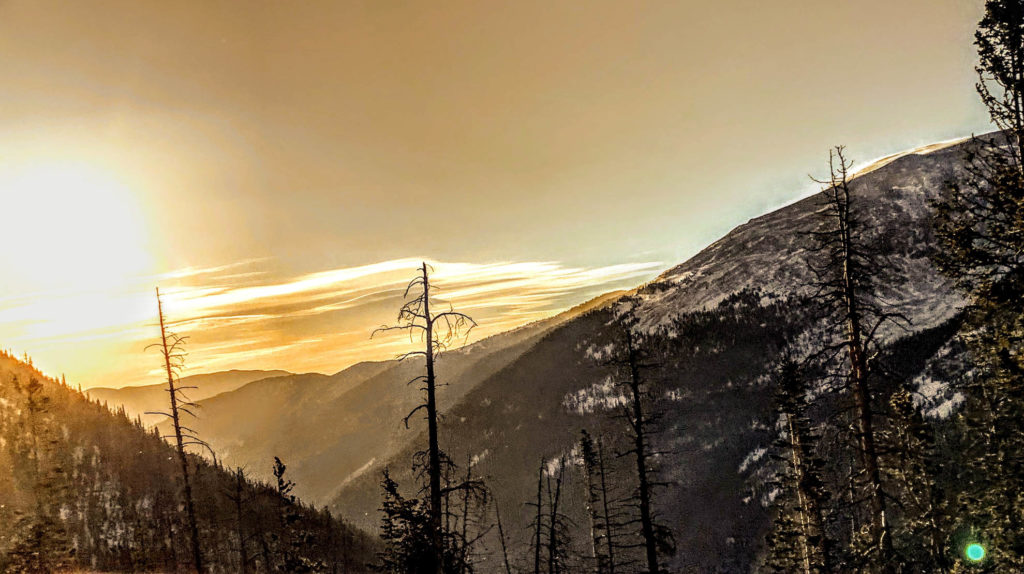If I’m being fully honest, I was nervous before this adventure. Sure, I backpacked Europe and yes, I’d gone hiking and camping before. However, I’d never gone backcountry hiking and camping. I’d never experienced hiking 9+ miles four days in a row while carrying everything I needed in on my back in the middle of the wilderness.
I spent this past Labor Day weekend backcountry camping in the Grand Tetons with a three of my friends (Will, Emma, and Lisha). For those who don’t know the Grand Tetons is a national park in Northwestern Wyoming and honestly one of the most beautiful places on earth. It’s a great place to reconnect with nature and a place I highly recommend spending some time at some point in your life.
When I backpacked Europe I was forced to carry most of my possessions in one single backpack, however I didn’t have to worry about food or water. I didn’t have the stress of planning out my meals ahead of time or wondering where I was going to find water to drink.
The previous hikes I’d been on were all day hikes. I’d set off with my cute little 20L day pack filled with snacks, a water bottle, GoPro, drone, Nebraska flag and be home before the sun went down. I didn’t worry about what kind of shape I was in and if the weight of my pack would wear me down over the course of the trip.
My previous camping experience was car camping. Which looking back seems like cheating. Fun fact, I can stuff a lot more shit in a car than I can a 65L backpack. I didn’t worry about forgetting anything. I was never conflicted about how much whiskey to bring because there was always more room in the trunk (I left the whiskey at home for this trip and yes that made me die a little on the inside).
Yes, backcountry camping was going to be a whole new type of challenge- which conveniently are my favorite kind.
If you want to go backcountry camping in the Grand Tetons (or any national park in the United States) there are a few things to consider. The first thing is getting a park permit that allows you to overnight camp in the designated camping zones (thanks Nicole).
The second is what type of physical shape are you in? It’s one thing to be able to walk around the block it’s quite another to walk 9 miles up and down peaks for multiple days in a row carrying 50 pounds of gear on your back.
The third thing that caused me a the most anxiety was what the hell to pack. Try as I might not to be, I’ve always been an overthinker. Questions and ‘what if’ scenarios kept running through my mind in the days leading up to the trip. Will I have room for everything I need? What if it rains? What if I get hurt? On and on the questions flooded my mind.
When you’re in the middle of the Grand Tetons there isn’t a Trader Joe’s you can run to if you’re out of food. There isn’t a hospital to go to if you walk through a glass door. You really have to plan ahead with what you wear, what you’re going to eat, how you’ll take care of your feet, what you’ll drink, and how to pack your bag not only so it fits but so you can comfortably carry everything.
Lucky for me I have friends who’ve done this before and helped me understand what to pack, how much, and why. Even with their help I overpacked (mostly food and clothes). Before we left the hostel to begin the hike I had Lisha help me sort through what I needed to bring and what should be left behind in the car.
To save you the worry I’ve compiled a list of what actually made it out on the trail with me in the hopes it can help you the next time you go backcountry camping.
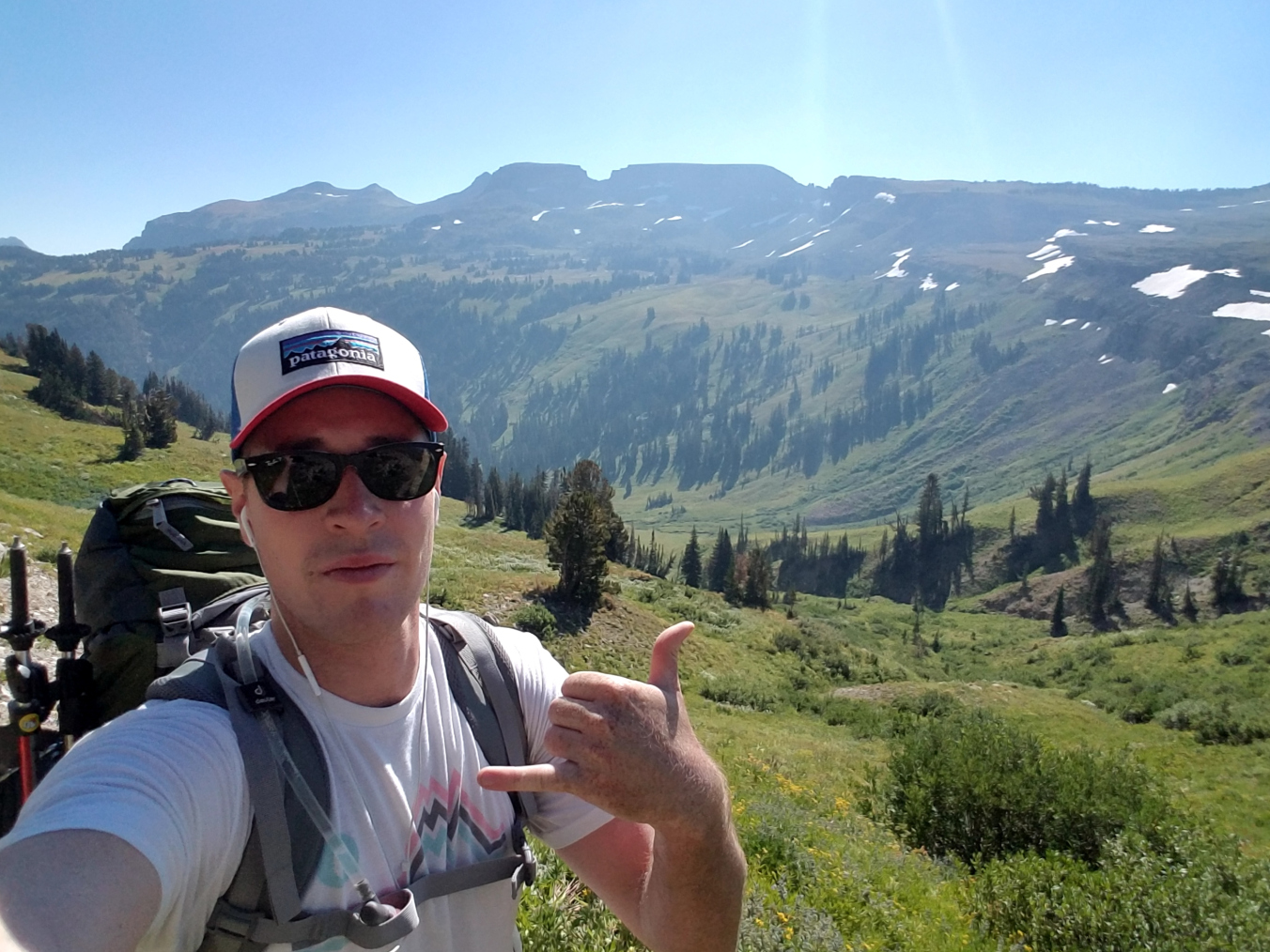
Quick Disclaimer:
As a fairly in shape and big guy (6’ 4’ 200 pounds), I have the luxury of being able to carry more weight than other people. This allows for me to bring a few extra items that may not be a necessity but more of a luxury (hammock, camping blanket, etc). There were numerous times when Will, Emma, or Lisha would try to pick up my pack and comment that it was a lot heavier than theirs. Sometimes (not on public transport is SE Asia) it pays to be big. In the four days we were hiking I can honestly say I felt little discomfort from my bag being “too heavy.”
“The world's big and I want to have a good look at it before it gets dark.”
John Muir
I broke everything that I brought in my bag into 4 categories:
Group Gear
- Items that we brought and shared amongst the four of us. But are things you will want to consider bringing regardless of the size of your group. For example, I carried the tent stuff and Will carried the Bear Can and most of our food.
Individual Gear
- Items that each person brought and carried for themselves.
Clothing
- Function > Fashion Layers are key.
Food
- I’m one of the least picky eaters in the world. I eat to survive and try to do so in the most low cost and efficient manner possible. The food I brought on this trip reflects that lifestyle choice. Lisha and Emma would boil water and have delicious REI prepared meals while Will and I ate a lot of clif bars, tuna, and peanut butter wraps.
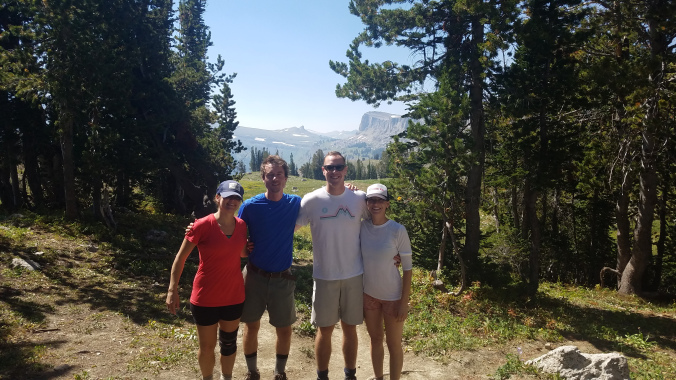
Group Gear (per group of 2)
- 2-person Tent with rain-fly (and poles)
- Footprint/Tarp for under tent
- Stove and Pot
- Measuring Cup
- Lighter
- Water Filter
- Water treatment tablets (just in case)
- Bear Canister w/Odor neutralizing bags
- 1 220 Fuel Can
- Topo Map
- Compass
Individual Gear
- 65L Backpack
- North Face Furnace Sleeping Bag (20ºF Rating)
- REI inflatable Sleeping Pad
- Inflatable Pillow
- Mug (for tea)
- Spoon/Fork
- Knife
- Bowl
- Headlamp w/extra batteries
- Trekking Poles
- 2.5L Hydration Pack
- 1 empty 1L Nalgene or collapsible Bottle
- MedKit w/moleskin, bandages, painkillers, antiseptic
- Notebook and pen
- Travels with Charley- by John Steinbeck
- Stuff Sack- for tent, footprint, and rainfly
- Compression sack- for sleeping bag
- Toiletries: TP, Wet wipes, deodorant, Toothbrush/paste,
- Poop Trowel/shovel
- Bug Spray
- Sunscreen
- Hammock
- Cotopaxi camping blanket
- Playing Cards
- Powerbank
- GoPro 5 with extra batteries
- GoPro 5 3 way stick
- DJI Spark Drone with extra battery
- Cellphone
- Earbuds
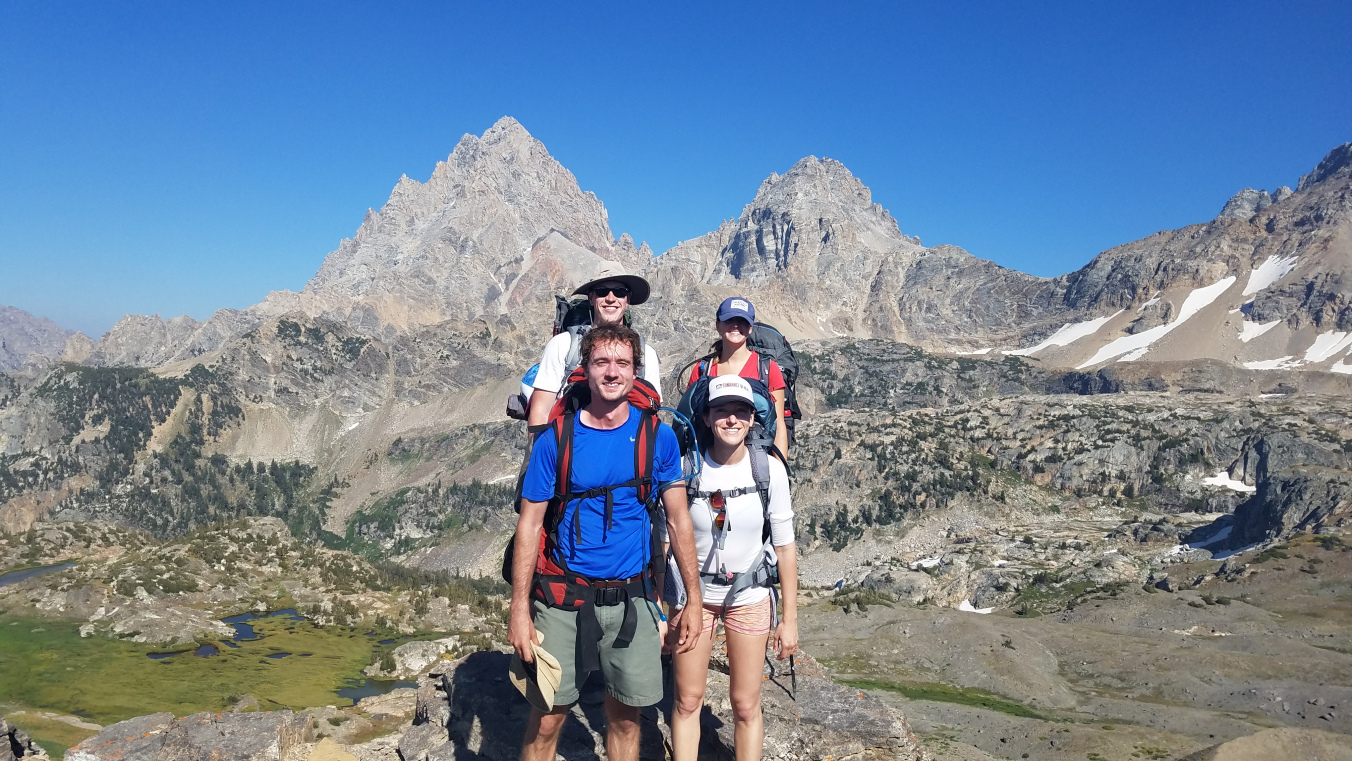
Clothing List
- 3 pair of compression shorts
- 3 pairs hiking socks
- 3 pairs of sock liners
- 2 pair of Hiking shorts
- 1 pair of hiking pants
- 1 pair of neon tights as Baselayer Pants
- 3 T-shirts (no cotton)
- 1 Long sleeve Shirt (no cotton)
- Midweight Quarter Zip fleece Layer
- Cotopaxi Rain resist quarter zip
- Hiking boots
- Sandals (camp shoes)
- Sunhat
- Baseball camp
- Beanie
- Sunglasses
- Extra Clothes for Before and After
Food (on a typical day goal of 3000 Calories)
Breakfast
- Cup of Green Tea
- 2 Clif Bars
Snack 1
- Jerky or Trail Mix
Lunch
- Summer sausage, cheese, and crackers
- Peanut Butter Wraps
Snack 2
- Jerky or Trail Mix
- Clif Bar
Dinner
- 2-3 buffalo styled tuna wraps in tortillas
- Jerky/Trail Mix
- Cup of Green Tea
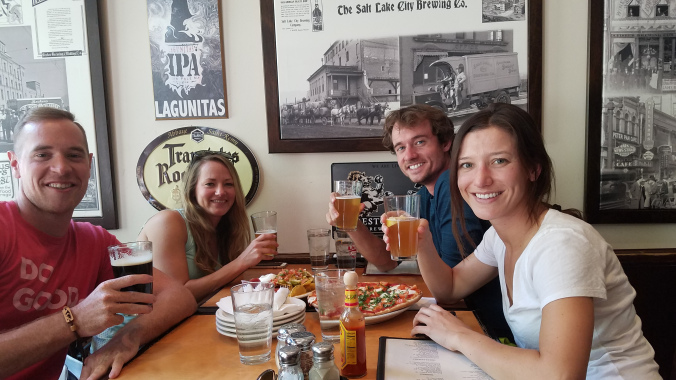
Saying the trip was great would be an understatement. Which is no surprise when you’re surrounded by amazing people and spectacular views. Getting away for a few days really helped me hit the mental reset button. Backcountry camping isn’t for the weak of heart or mind. You have the be prepared to push through exhaustion, fight off mosquitoes, and rough it a bit. However, if you can handle all of that it’s completely worth it and rewarding. Now that I’ve gotten my feet wet you can be sure I’ll be doing more of it going forward.
The best way to keep up with my adventures is to follow me on Instagram- Todds_Tales.
Stay Gold.

